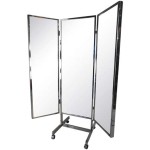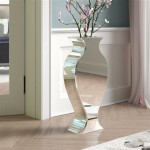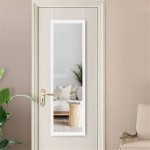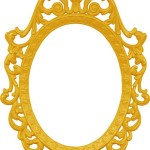Mirror Canvas in Clip Studio Paint: A Comprehensive Guide
Clip Studio Paint is a versatile digital art application used by illustrators, comic artists, and animators. Among its many features, the mirror canvas functionality stands out as a powerful tool for creating symmetrical artwork efficiently. This article provides a detailed exploration of the mirror canvas capabilities within Clip Studio Paint, covering its setup, usage, and benefits for various artistic endeavors.
The mirror canvas, also known as symmetrical drawing, allows users to draw on one side of a defined axis, and the software automatically reflects the strokes on the opposite side. This feature avoids the need for repetitive drawing and helps maintain perfect symmetry, making it ideal for creating character designs, mandalas, architectural illustrations, and other symmetrical compositions. Understanding how to effectively utilize the mirror canvas can significantly improve workflow and precision in digital artwork creation.
Setting Up the Mirror Canvas
Creating a mirror canvas in Clip Studio Paint is straightforward. The process begins with selecting the “Symmetry Ruler” tool, which is found within the Ruler tool group. This tool is the foundation for establishing the axis of symmetry that the mirror function will use. Users can locate the Ruler tool by navigating to the Tool Palette and selecting the Ruler icon. Within the Ruler tool group, the Symmetry Ruler is typically represented by an icon displaying a line with symmetrical shapes on either side.
Once the Symmetry Ruler tool is selected, users must define the axis of symmetry on the canvas. This is done by clicking and dragging on the canvas. The starting point of the drag defines one end of the axis, and the ending point defines the other. The line created during this process represents the central line around which the artwork will be mirrored. The orientation of this line determines the direction of symmetry. A vertical line creates horizontal symmetry, while a horizontal line creates vertical symmetry. Diagonal lines create symmetry along that specific angle.
The Symmetry Ruler tool offers several customizable options within the Tool Property palette. One crucial option is the “Number of Lines” setting. By default, it is set to 2, which creates a single mirror effect across the drawn axis. Increasing the Number of Lines creates multiple symmetrical sections radiating from the center point. Setting this to 4, for example, will create a radial symmetry with four repeating sections. This is particularly useful for creating mandalas or intricate circular designs.
Another important setting is the "Line symmetry" checkbox. With this checkbox enabled, the drawn lines themselves are mirrored. When unchecked, the line strokes are only mirrored, but the lines themselves are not duplicated across the axis. This setting has a subtle but significant impact on the final appearance of the artwork. For example, when designing a character, enabling Line symmetry can produce a very rigid and unnatural look, particularly if the character is meant to appear organic. Disabling it allows for more controlled and natural-looking symmetry.
The “Angle” setting allows for precise adjustment of the axis’s orientation. Users can manually enter a numeric value to define the angle of the symmetry line, which is useful for creating patterns with specific angular relationships. The "Snap to Angle" function ensures that rulers are drawn in exact increments, such as 45 or 90 degrees, creating precise radial symmetry.
The "Symmetrical Ruler" can be moved and rotated after creation using the Object tool. By selecting the Object tool and clicking on the Symmetry Ruler, the user gains control over its position and orientation. This is particularly useful for fine-tuning the placement of the symmetry axis after initial setup. Pressing the "Ctrl" key while moving the ruler snaps it to certain angles and positions relative to the canvas. Furthermore, clicking the "Delete" key will remove the symmetry ruler from the canvas.
Utilizing the Mirror Canvas for Different Art Styles
The mirror canvas functionality can be applied to a wide range of artistic styles and projects. Its usefulness extends beyond simply creating perfectly symmetrical images. By strategically combining the mirror canvas with other tools and techniques within Clip Studio Paint, artists can achieve diverse and complex effects.
For character design, the mirror canvas is invaluable for creating balanced and symmetrical character faces and body structures. Initially sketching out the basic proportions and features using the symmetry ruler ensures a consistent design across both sides of the character. This is particularly useful for crafting expressions and ensuring that details like eye placement and ear size are consistent. Once the initial symmetrical sketch is complete, the symmetry ruler can be disabled or removed, allowing for further individualization and asymmetry to add character and realism.
When creating detailed architectural illustrations, the mirror canvas simplifies the process of drawing symmetrical buildings and structures. Aligning the symmetry axis vertically allows for precise mirroring of architectural elements such as windows, doors, and decorative features. This ensures that both sides of the building are consistent and visually balanced. This technique is especially useful for drafting large-scale cityscapes or intricate building facades.
In manga and comic art, the mirror canvas is advantageous for crafting panel layouts and symmetrical backgrounds. Creating a symmetrical background using the tool not only saves time but also establishes a sense of balance and visual appeal within the panel. It also aids in drawing repetitive elements like trees, buildings, or crowds efficiently. The mirror canvas can be strategically used to emphasize specific panels or create visual impact within the comic strip.
For creating intricate patterns and designs, such as mandalas or tessellations, the mirror canvas is an essential tool. By increasing the "Number of Lines" in the Symmetry Ruler, artists can create complex radial patterns with ease. This allows for the rapid creation of intricate details and symmetrical arrangements. Experimenting with various brush types and colors within the mirror canvas can produce stunning and unique visual effects.
The mirror canvas can also be used in animation. It can be helpful for designing symmetrical character models and creating symmetrical animations. For instance, a character performing a gesture equally with both arms can be efficiently animated using the mirror tool. The animation process can greatly benefit by utilizing this feature, as the artist can concentrate on creating a single side of the animation and have the other side automatically mirrored. This reduces the workload and ensures consistency across frames. This is most effective on animation styles that require exact symmetry.
Advanced Techniques and Considerations
While the mirror canvas offers a straightforward approach to symmetrical drawing, several advanced techniques and considerations can further enhance its utility and versatility. Mastering these nuances allows artists to push the boundaries of what the mirror canvas can achieve and integrate it seamlessly into their workflow.
One advanced technique involves using multiple symmetry rulers within the same canvas. By placing different symmetry rulers at different angles or positions, artists can create complex patterns and layered symmetry effects. This allows for the creation of designs that are symmetrical along multiple axes, offering greater control over the final composition. For example, combining a vertical symmetry ruler with a radial symmetry ruler creates a pattern that is both mirrored horizontally and radially symmetrical.
Another useful technique is creating masks to selectively apply the mirror effect to specific areas of the canvas. By creating a layer mask and using it in conjunction with the symmetry ruler, the artist can restrict the mirroring effect to only certain parts of the artwork. This allows for greater control over the composition and ensures that the symmetry effect is applied only where it is desired. This is particularly useful when working with complex designs that require both symmetrical and asymmetrical elements.
Artists can also utilize the mirror canvas in conjunction with other tools within Clip Studio Paint to achieve unique effects. Combining the symmetry ruler with perspective rulers, for example, allows for the creation of symmetrical artwork within a defined perspective. This is particularly useful for drawing symmetrical buildings or environments within a perspectival space. Similarly, the symmetry ruler can be used with vector layers to create precise and scalable symmetrical designs.
It's important to consider the limitations and potential drawbacks of the mirror canvas. While it is an invaluable tool for creating symmetrical artwork, relying solely on the mirror canvas can sometimes lead to a rigid and unnatural look. It's crucial to introduce subtle variations and asymmetries to the artwork to add character and realism. After establishing the base with the mirror canvas, artists can manually adjust and refine certain elements to introduce organic variations.
Another consideration is the performance impact of using multiple symmetry rulers or complex designs. Depending on the hardware capabilities of the computer, using too many symmetry rulers or applying them to very large canvases can impact performance and slow down the application. It's recommended to optimize the complexity of the symmetrical design and use multiple layers to reduce the load on the system.
Finally, understanding the different settings and options within the Symmetry Ruler tool is crucial for maximizing its potential. Experimenting with the "Number of Lines", "Line Symmetry", and "Angle" settings allows for the creation of a wide range of symmetrical effects. Artists should also familiarize themselves with the various snapping and transformation options to precisely position and orient the Symmetry Ruler within the canvas.

Clip Studio Paint Startup Guide Flipping The Canvas Horizontally

Clip Studio Paint Startup Guide Flipping The Canvas Horizontally

Clip Studio Paint Instruction Manual Rotate Invert Canvas

Clip Studio Paint Startup Guide Rotating The Canvas

Navigating The Canvas

How To Flip An Image Learn Csp

Navigating The Canvas

How To Flip A Selection And Layer In Clip Studio Paint Adventures With Art

Clip Studio Paint Instruction Manual Flip Horizontal

How To Rotate Move And Flip The Canvas In Clip Studio Paint







